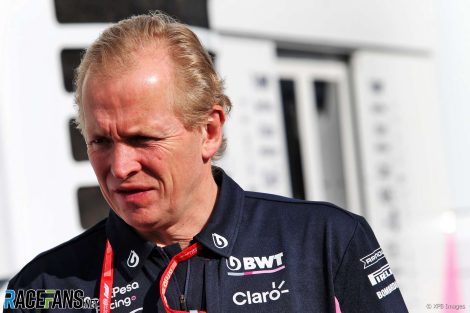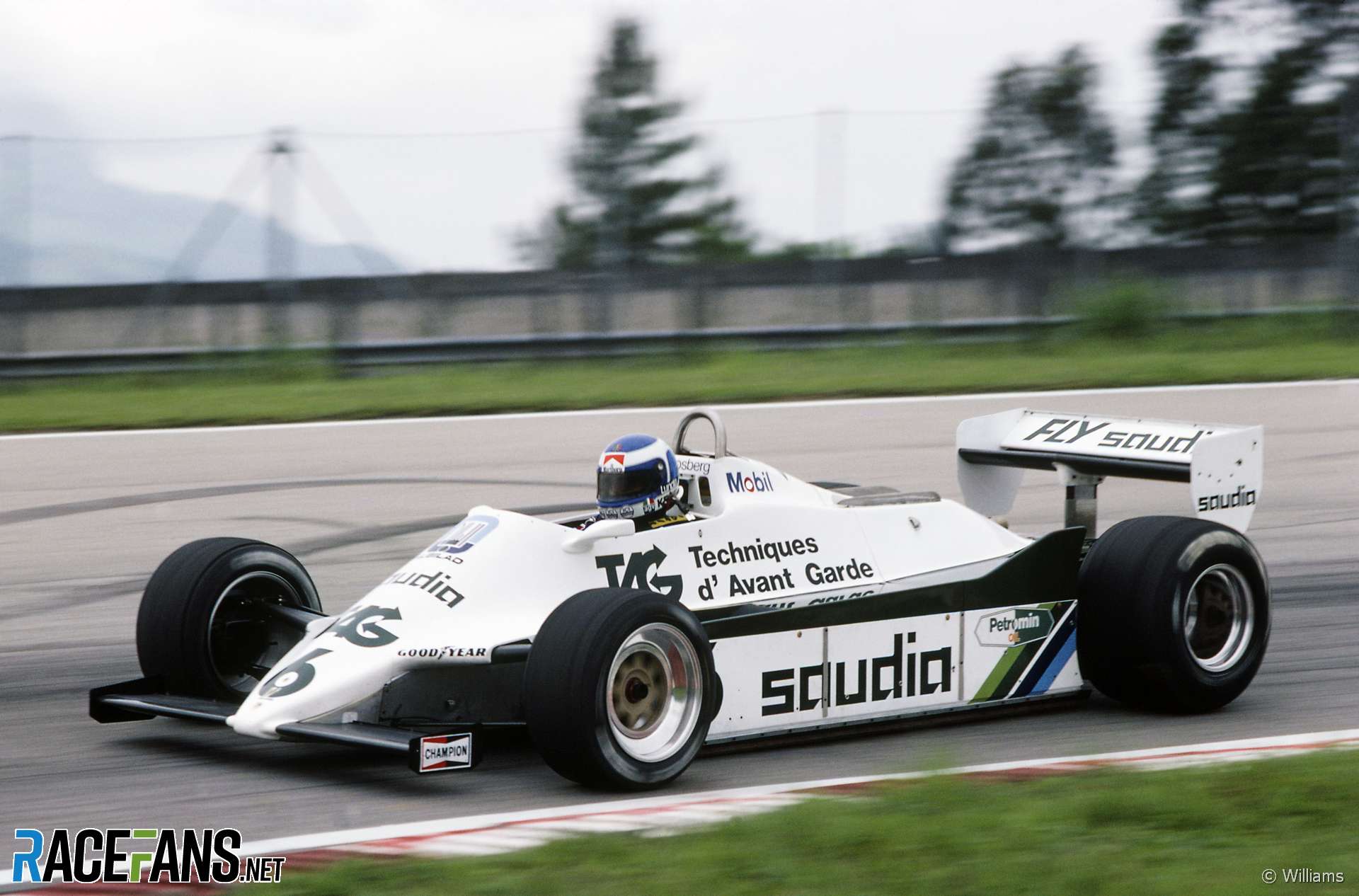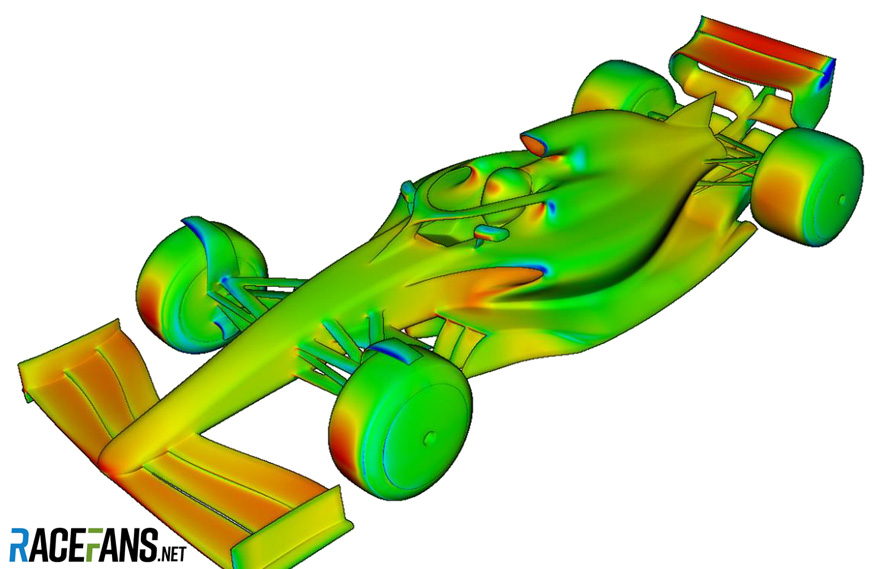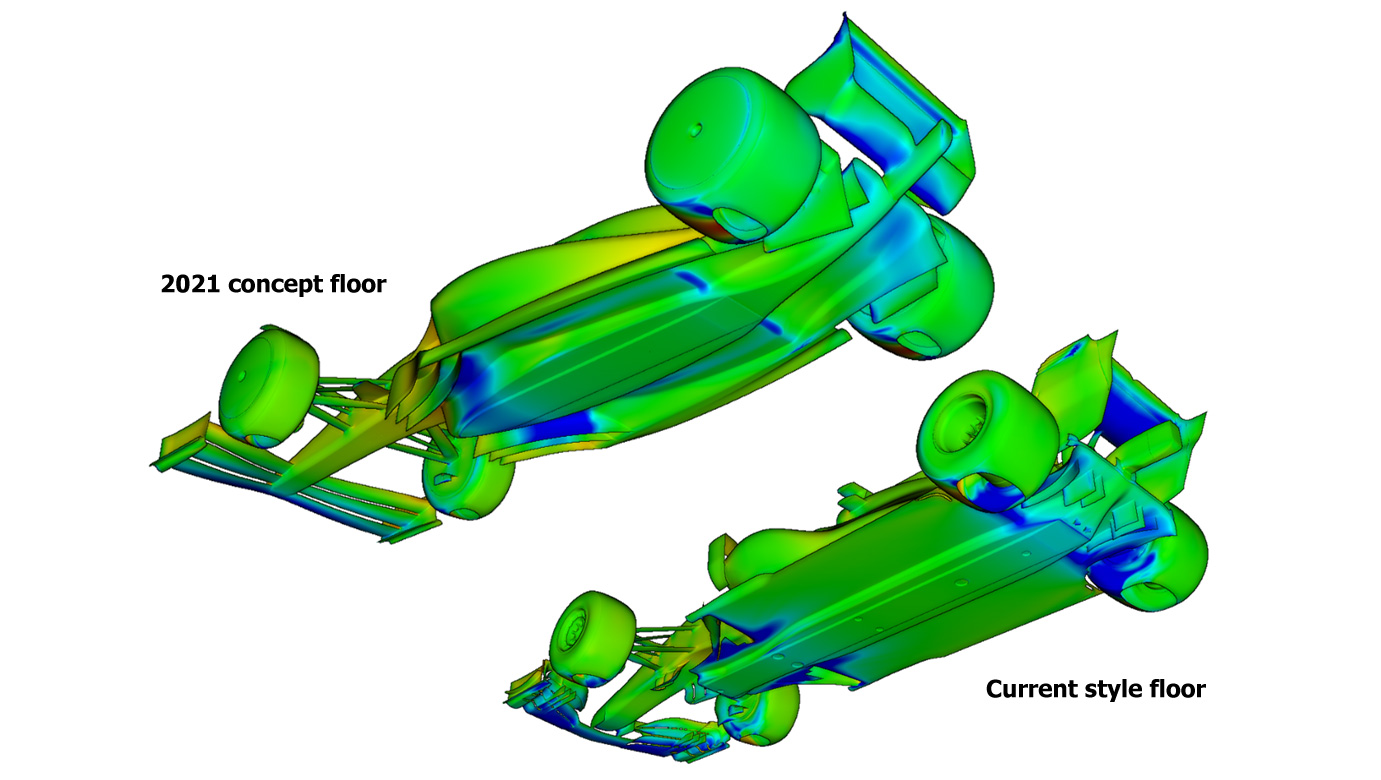Formula 1 is going in the “right direction” by bringing back ground effect aerodynamics to encourage overtaking, according to Racing Point’s technical director Andrew Green.
Speaking to RaceFans in an exclusive interview, Green said believes the planned changes to F1’s technical rules for 2021 will help drivers to follow each other more closely.“There’s an awful lot of change to the technical regs,” said Green. “But on the whole the majority of them are going in the right direction.
“I’m all for close racing, more exciting racing and trying to level the playing field. I think a big portion of the regulation changes have good potential.”
One major change in the 2021 rules is the return of ‘ground effect’ aerodynamics. Teams will be permitted to use large underbody tunnels to generate downforce while restricting the use of surface wings. Green believes this will be a change for the better.
“The regulation direction, technically, [it’s] the right direction to go to a more ground effect car. We’ve been saying this for a long time: if you want to solve the close following [problem], change the physics. And the physics change is go ground effect because it’s a different physics, it’s not disturbed as much by the car in front. That’s a good direction, the direction we should go in.”
However Green expects cars will continue to generate the vast majority of grip through aerodynamics rather than other means.
Advert | Become a RaceFans supporter and
“I still think it’s going to be massively biased towards aerodynamics,” he said. “I think it’s going to be 80-20.

The new regulations are expected to introduce greater restrictions on teams’ aerodynamic development. But Green believes aerodynamic development will remain an important aspect of the sport.
“There always should be a case for the team that does the better job having a better chance of winning,” he said. “Otherwise there’s no point trying hard.
“I think the regulations still allow for freedom and will ultimately allow the bigger teams to be able to develop to a higher level than the smaller teams. But the gap between the two should be, ultimately, smaller than where we are now.
“You could argue if you left the regulations alone as they are now we’ll all asymptote [converge] anyway. But this is a reset, it probably will spread to start with, [then] they’ll close up again.”
More on F1’s new rules for 2021
Advert | Become a RaceFans supporter and
2021 F1 season
- Verdict on error in GT race suggests Mercedes would have lost 2021 Abu Dhabi GP appeal
- Title ‘stolen’ from Mercedes made us ‘underdogs people cheer for’ – Wolff
- Red Bull Racing spent £230m during Verstappen’s title-winning 2021 campaign
- ‘I can’t box?’: Hamilton and Verstappen’s 2021 Abu Dhabi GP radio transcript
- Abu Dhabi’s legacy one year on: How the controversial 2021 finale changed F1







Only Facts!
28th August 2019, 15:25
Depending on How much downforce can be really be extracted after the first year of learning, drivers may be up for some G forces. Back to the neck trainning….
Also tyres will recieve more energy from faster cornering speeds. Back to the factory…
What about cooling? New side pods not large enough? Back to the dyno…
2021 promises to be interesting.
Robbie (@robbie)
28th August 2019, 16:14
For sure. Really exciting times.
grat
28th August 2019, 16:57
Keep in mind, this isn’t full-blown tarmac-ripping skirted ground-effects from the 1980’s, it’s “only” using a pair of venturi tunnels to make a really big diffuser (sort of). Ideally, they’ll generate roughly the same downforce, but a major chunk of it will be generated under the car, instead of at the rear wing.
Should be easier to manage aero balance front-to-rear, though, which should make it easier for the midfield teams.
NS Biker (@rekibsn)
28th August 2019, 17:14
This … sort of … answers my nagging question. How will the designers manage the sensitivity to ride height vs downforce.?
Without active suspension or, moveable aero controls on or in the tunnels, is this a problem.?
It looks like The Plank is still there, so there will be a limit to how much they can drag or bounce off on the track surface. but controlling the BIG-SUCK will be an interesting design problem.
Yes, a fascinating development. Some designers will get ti right and some won’t. I also suspect that one or two will nail it and make the Double Diffuser look simple.
Looking forward to seeing he 2021 rules. Yes, the ultimate cure for insomnia.
Darryn Smith (@darryn)
28th August 2019, 18:30
Indy used tunnels under cars for decades. I haven’t followed Indy for 20 years, but the more primitive than F1 cars of the 80’s and 90’s were cars with tunnels and I never remember this being a problem. Indy never had active suspension or moveable aero controls. I remember they shortened the length of the tunnels at some point.
anon
28th August 2019, 20:08
@darryn, it depends, as some of the more recent IndyCars have had periods when the drivers were complaining that the cars were unpredictable and ill-handling messes.
To begin with, the DW12 chassis reportedly became very unstable on corner entry – Scott Dixon described the handling as “downright evil” and “a bit of a pig” because the handling was atrocious – in part because the behaviour of the aerodynamics on track initially didn’t match what Dallara’s simulations and wind tunnel testing indicated it should have been.
The car as a whole was rather flawed, granted, and it took some fairly desperate measures to resolve it – a complete redesign of the floor, wings and sidepods, new front and rear suspension and an additional 12kg of ballast had to be shoved into the nose to improve the weight distribution, due to it being rather rearward (which I believe did cause some issues with porpoising).
That said, I think that a number of the drivers had to be careful about expressing any criticism of the cars, as the regulations for the IndyCar series make it a punishable offence to say anything about suppliers that the organisers of the series deem to be too critical of them.
Darryn Smith (@darryn)
28th August 2019, 20:19
Interesting. Thanks!
DB-C90 (@dbradock)
29th August 2019, 0:29
Of course the plank is still there – how would F1 ever survive without the sparks
grat
29th August 2019, 1:12
Actually, the sparks are from skid blocks which protect the plank.
Which boggles my mind.
DB-C90 (@dbradock)
29th August 2019, 4:33
I thought the skid blocks were integrated into the plank but I’m no expert.
The sparks drive me mad – used to be that if you saw sparks there was a mechanical problem. Now they’re there to make things more exciting for the fans ……. (sigh)
anon
29th August 2019, 7:43
@dbradock, whilst the official explanation was that the change in skid block material was to create more dramatic sparks, Whiting did later state that the real reason was rather different. He later stated that the reason for the change in the skid block material was mainly to stop a few teams from abusing the ride height regulations, plus also for safety reasons.
Using an aluminium alloy meant the skid blocks wear out faster, which eliminated some of the tricks that the teams were using to run potentially illegal floors on track. Furthermore, there had been one or two cases of cars being damaged by striking a skid block that had come loose from another car – so, as the aluminium skid blocks are also lighter than the older titanium ones, the rationale is that they would be likely to do less damage if somebody struck one of them at speed.
Darryn Smith (@darryn)
28th August 2019, 18:37
I just don’t see how closing the rules up further will bring the teams closer. The tighter rules that we have now has made the teams closer in terms of quali times front to back, but arguably we are having one of the most dominant periods by one team ever. Freedom in the rules allows a team like Williams to once in awhile come up with something clever and make a good car. This will never happen tightening up the already tight rules.
Robbie (@robbie)
29th August 2019, 6:27
@darryn Conversely, the odds are that freedom in the rules usually favours the more resourced teams and chances are they will come up with even more clever things than a lesser team might on the off chance.
obster
28th August 2019, 20:31
This will be interesting to see. In the early 80’s F1 ran away quickly from full scale ground effect. Lets hope the rules are written sensibly. Ross Brawn is involved so there’s a chance this will work…
DB-C90 (@dbradock)
29th August 2019, 4:41
I don’t think there’s any doubt that ground effects are a step in the right direction and should have been back on the agenda years ago.
However reading through the article, it seems clear that the difference, particularly initially may not be as great as people hope – he foresees a wider gap initially that will close up after a period of time that the thinks will be shorter than its taken for the gap to close up under the current regulations.
I seriously hope people are not expecting some magical scenario where there’s a heap of cars fighting it out for the top 3 positions running nose to tail for lap after lap in 2021. I suspect that might happen after several years once budget caps bite a bit and other aspects like PU’s level out. Ground effects will certainly contribute to the pace at which that will happen and Green’s comments appear to support that.
Robbie (@robbie)
29th August 2019, 7:05
@dbradock A heap of cars? No. All one has to do is pay close attention to the things Brawn has been saying and the idea is really just that there will be more close battles for position, ie. more of the enthralling combat, only sans drs, than we currently have.
DB-C90 (@dbradock)
29th August 2019, 7:54
Kinda like we have had for years – the only place things aren’t close is at the front and even that’s improved this year.
And no that isn’t all down to DRS
Robbie (@robbie)
29th August 2019, 9:10
No it will be unlike anything they’ve had ever in how the cars will feel for the drivers while trailing a car. They’ll have much more confidence to attempt passes because their cars won’t feel/behave drastically different in dirty air like they do now, needing a device to launch themselves past a trailing car or otherwise sit there for corner after corner or lap after lap handcuffed.